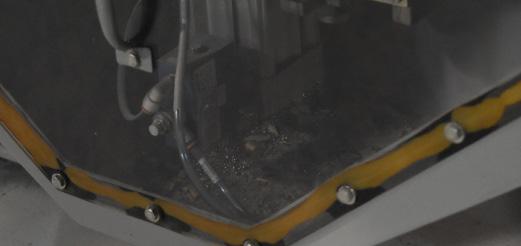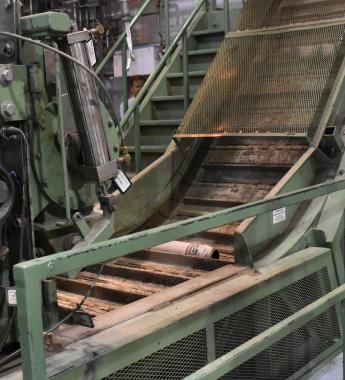
6 minute read
PSJ meets readers where they are
Shaken by the news of our local printing press shutting down, the PSJ has spent time to reflect on the importance of local news.
Inspired by advisory board member Jayson Peters, some of the PSJ staff felt that it was necessary to share their views on the value of news, the future of Pueblo media and the direction of journalism in the era of technology.
Advertisement
Above all, the PSJ aims to meet readers where they are, in any medium, in any way. We aren’t going anywhere.
What makes news “newsworthy” is determined by a story’s timeliness, its impact, its relevance, its novelty and other factors that are evaluated by an individual reporter. While not every story can be told, every journalist knows which one needs to be told by them, as they are compelled to serve their own readers. But how does this compulsion manifest beyond the individual, as a team, a newspaper, a news channel, as an industry and a discipline?
There is a figure of speech called “metonymy” which means to represent a part of a whole; a common example is referring to the “White House” as representing the federal government, instead of a location. A similar situation occurs with “The Newspaper.” What propels news is not just one entity but a team of reporters, photographers and editors along with printers, the sales team and IT professionals. When we refer to The Newspaper, we mean these people—this team—and, sometimes, the actual fruit of their labor: a quick print on cheap, pulpy paper that has been the backbone of documenting ongoing history, spreading information and morning rituals for centuries. Much like with the invention of the television, bringing with it the “News Channel” and its own metonymy, we are once again challenged with conceptualizing “The Newspaper” in this new era. While technology erodes the need for the inclusion of “paper” in “Newspaper,” The Newspaper represents the Sisyphean task of bringing public awareness to history in the making. This task is The Newspaper’s own journalistic: serving its readers—through all of its hurdles, each day. And I mean all its readers. While the team determines newsworthiness of a story, I encourage you to think of what makes a “Newspaper” worthy.
Rory Harbert Arts & News Editor
For me: I believe there are two key factors of a newspaper’s worthiness. One: News should be local, with a local staff that has the same stake in the game as its local readers. Two: It should be accessible. Limiting an audience to those with money, with unlimited access to technology, with far-off concerns and whims that never touch the very town a paper is supposed to cater to, is not true newsworthiness. The value of that paper diminishes, with the good work by its team going unseen and undervalued.
Printing is not cheap, but it is an investment. It’s investing in our most vulnerable communities, keeping them in the know and involved. What does it say about businesses and people who encourage a world where news can only be accessed by the wealthy or privileged? Technology is the future, but it is not the present. Not until getting a computer is as easy and inexpensive as grabbing a paper from a news rack.
The news of the Pueblo Chieftain printing press shut-down hit me like a ton of bricks.
Gannett, the Pueblo Chieftain’s parent company, announced plans to cut 51 jobs and permanently close printing production and distribution from the Pueblo Chieftain building on June 13. The Chieftain will continue to print their paper in Denver and ship it down to their readership base.
When I was a kid, I remember opening the Pueblo Chieftain sports page on a daily basis to check box scores from local prep games and to see if my beloved Chicago Cubs somehow made their way into the paper.
Ben Cason News content, Sports & Podcast manager


I have watched as the Chieftain has diminished and struggled over the last six years since I shadowed an editor there in college. I have friends who work there and I’ve gotten a chance to get close with their printing team now that I work with the Pueblo Star Journal.
In April it came to our minds that the hard-working team who prints the paper should get some well-deserved attention. I got a chance to write a cover story diving deep into the team there and the staggering amount of work they do. Todd Albo and his team take such pride in their work supporting local news and the legacy of the Chieftain itself.
Todd had a quote he said before we knew anything about the shut down: “If this press wasn’t running, the smaller town papers would be out of business. These little towns wouldn’t have a newspaper.”
The Chieftain press has printed 61 different newspapers spanning all of southern Colorado. As we come to grips with the news and figure out what the future looks like, my thoughts turn to these publications. I hope this move by Gannett won’t cascade into southern Colorado becoming a news desert.
I’m so proud of my friends and colleagues who write, report and print locally for the Chieftain with seemingly no support. I’m thankful I got to take the time to write about the Chieftain press team and I hope this isn’t a sad end to an incredible story.
Luke Lyons Contributing reporter
It was my dream to work at the Chieftain, and that dream came true in August 2015. I began as a sports clerk and worked my way to become a reporter and eventually to serve as the paper’s editor from December 2020 to January 2022. There were nearly 50 people in the newsroom when I started working there. There were nine of us left when I quit, and there are fewer now.
Watching the dismantling of the once-great institution is heartbreaking. I’m heartbroken for the 50 men and women who will find themselves out of work when the Chieftain printing facility closes in August.
I’m heartbroken for the remaining staff, who every day battle the misconceptions about the paper while dealing with the obstacles of trying their damndest to produce the news.
Gannett, the Chieftain’s parent company, is destroying local news in Pueblo — and across the country. The decision to outsource printing to the Denver Post is just another nail in the coffin; another signal that local journalism is on its last leg.
I hope those who made the decision to sell the Chieftain to a greedy, heartless conglomerate are as heartbroken, as angry and as disappointed as I am. I hope they’re as upset as my former colleagues and readers are.
It’s another sad story when it comes to local news in Pueblo. And sadder days are likely still to come.
Munitions at the Pueblo Chemical Depot went through a number of steps to eliminate the mustard agent. Most of the steps are operated robotically, but the hard-working crew at PCAPP is always monitoring progress.










Depot welcomes new commander FROM STAFF REPORTS
Col. Rodney McCutcheon on June 29 assumed command as the 40th commander of the U.S. Army Pueblo Chemical Depot.

McCutcheon, a former Blue Grass Chemical Activity commander, replaces outgoing Col. Jason Lacroix, who was removed from his post in May under suspension and investigation for unspecified reasons. After serving nearly two years as depot commander, Lacroix was due to step down in June, with McCutcheon already designated as his successor in the post.
The depot’s decades-long mission of guarding an aging chemical weapons stockpile has ended, with the full destruction of the mustard agent munitions there as of June 22, and it will now be closed and transferred to an economic reuse authority, PuebloPlex, for decontamination, demolition and redevelopment.
The new commander is a decorated veteran of the Army Chemical Corps and Operation Iraqi Freedom.
been destroyed.”
The U.S. declared a completion date of Sept. 30, 2023, for the destruction of all chemical weapons it owns or possesses domestically and abroad, along with destruction of the facilities that were involved in the production of chemical weapons.
In 2002, neutralization followed by biotreatment was the method selected to destroy the more than 780,000 mustard-filled munitions at the Pueblo Chemical Depot, which was one of only two destruction sites, of the nine total sites, not to use the incineration method to dispose of munitions.

Sheila Johnson, the Commander’s Representative at the depot, said that “Coloradans were concerned about the off-gas.”
“If you do incineration, the residue has to go somewhere up in the air,” she said. “Even though it was proven there was no danger in it, Colorado and Kentucky said no.”
In response to the community outcry against incineration, the Program Executive Office, Assembled Chemical Weapons Alternatives was assigned responsibility for destruction of remaining stockpiles in Kentucky and Colorado. PEO








